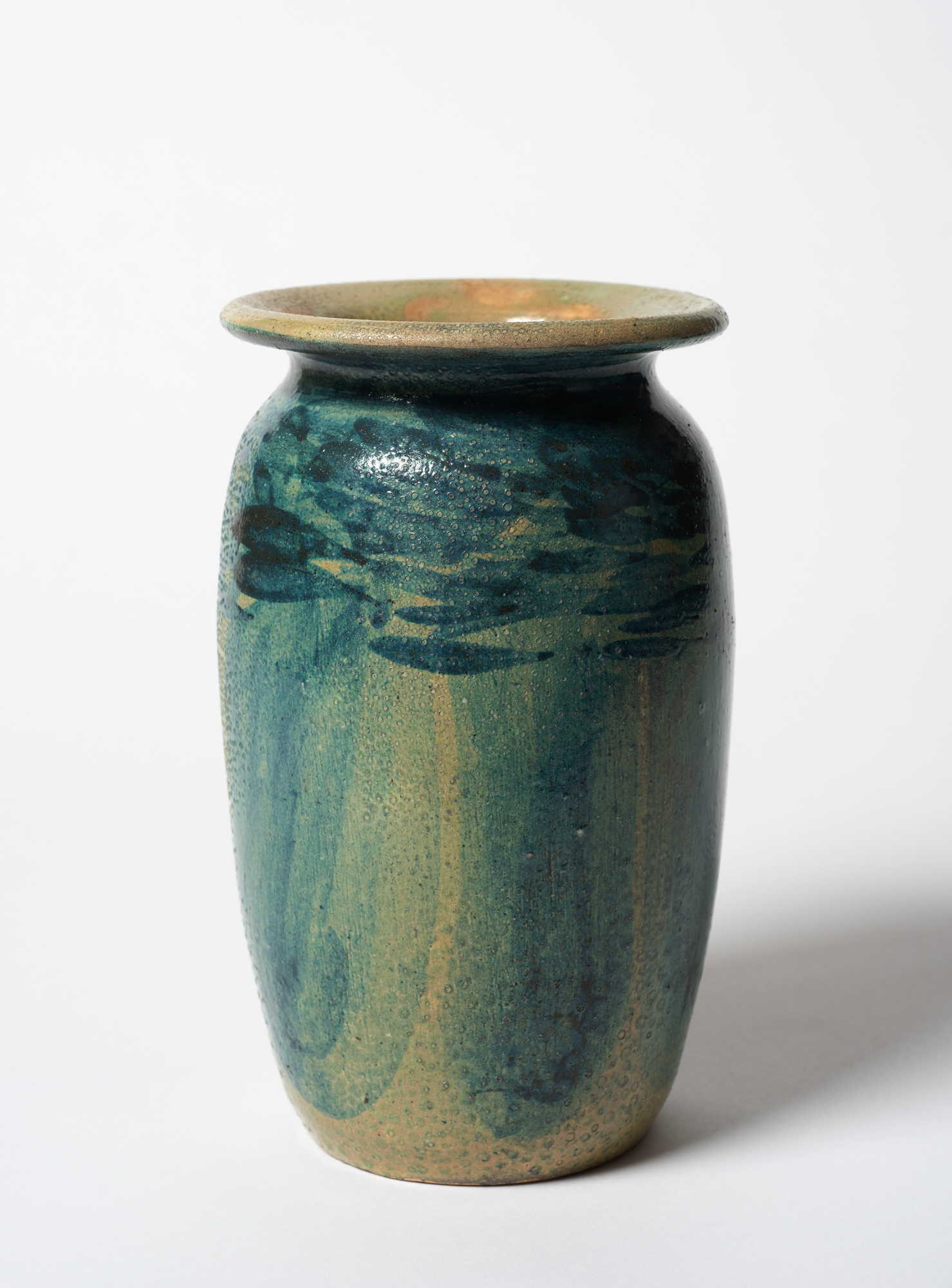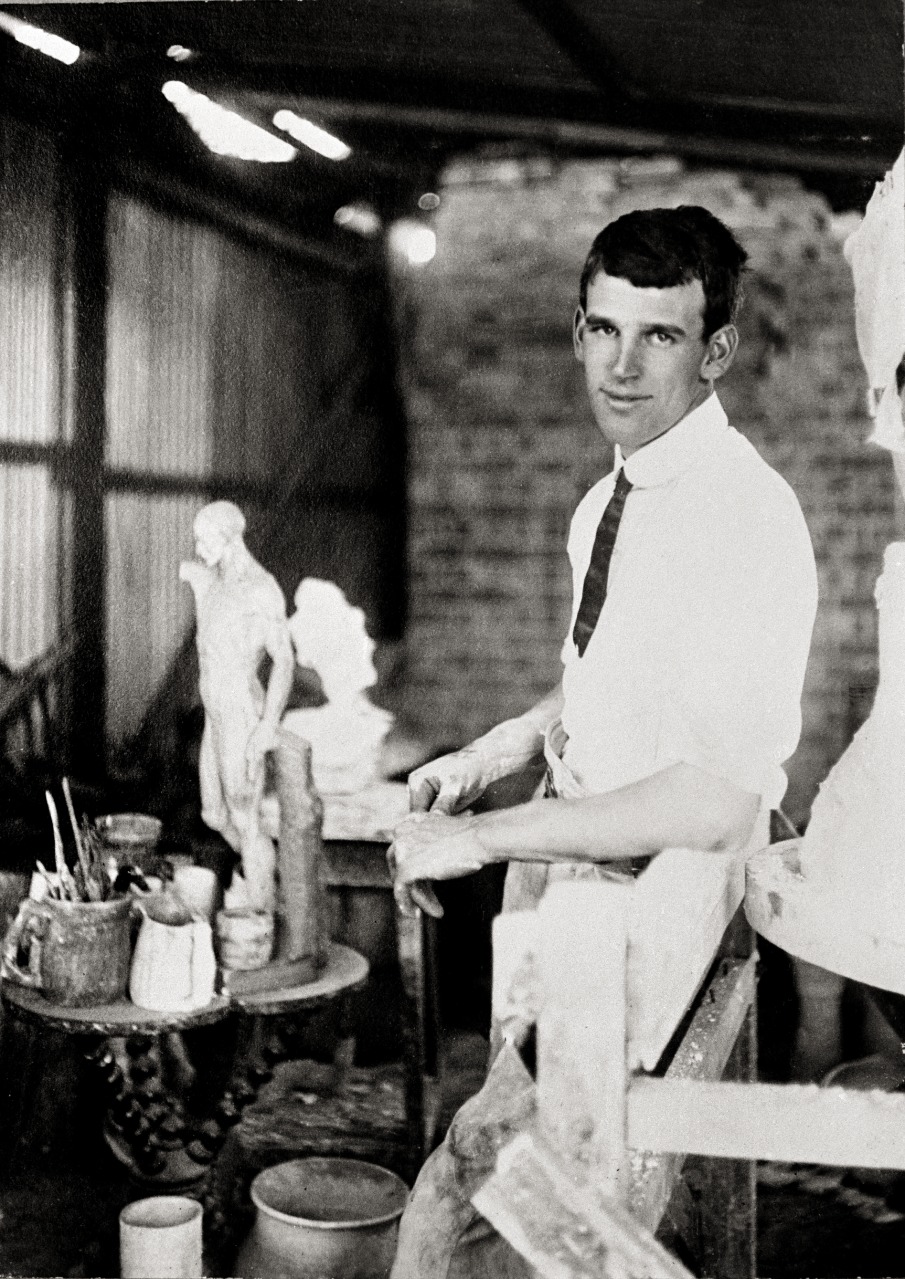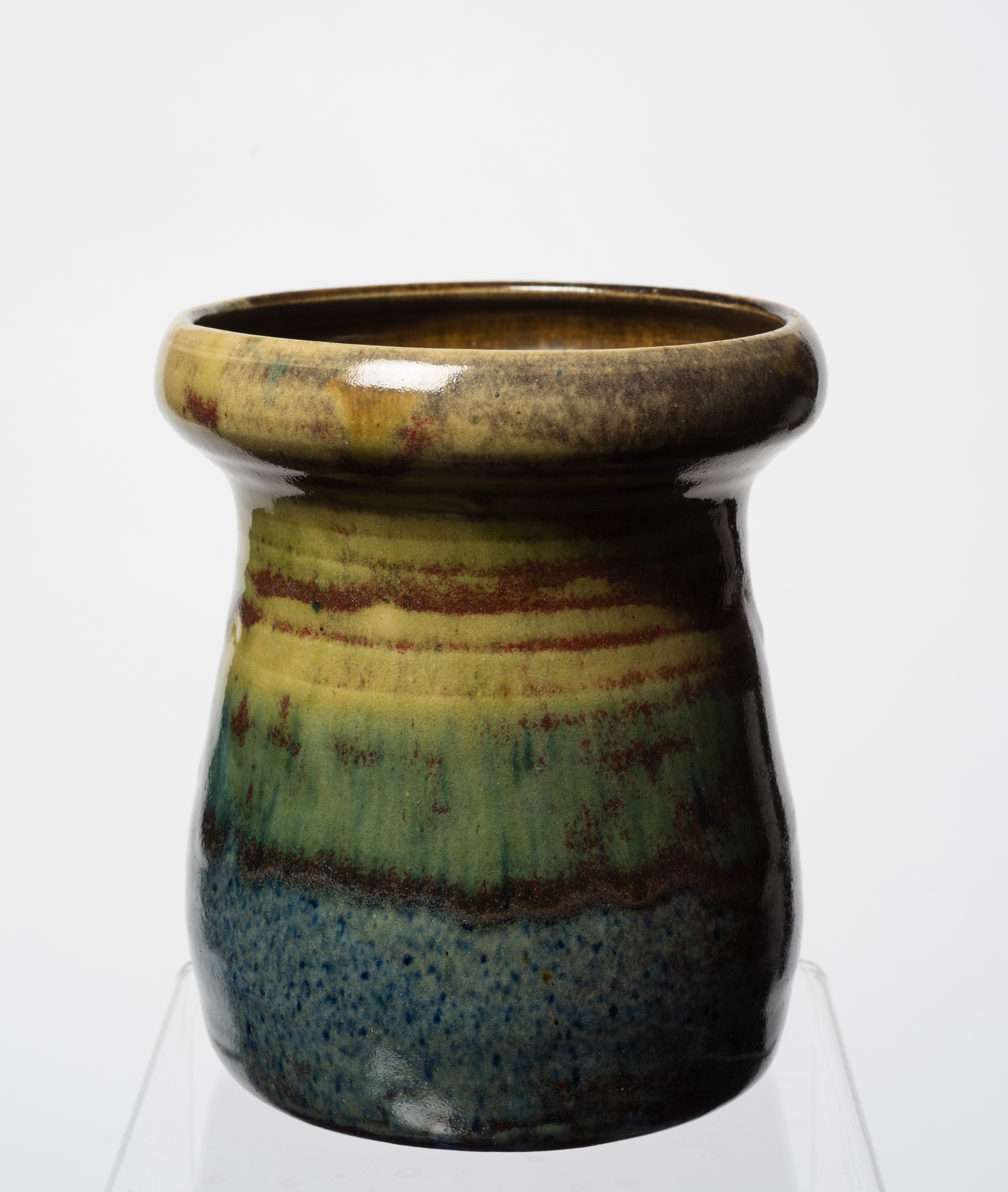Soumilas on Boyd
In this scholarly Reflection, Diane Soumilas places two glorious works by Merric Boyd from the CAM collection within a broader context of Boyd’s life in Murrumbeena, where he lived and worked – making an enduring contribution to Australian studio ceramics.
The remarkable Boyd family has been a focus at the Glen Eira City Council Gallery, Melbourne, where Castlemaine-raised Soumilas is the Curator and Gallery Coordinator.

Diane Soumilas on Merric Boyd
Over many decades of visiting CAM’s exhibitions and enjoying diverse works from this fascinating and significant collection of Australian art, it was difficult to select one work to reflect on. After some consideration, I selected this fine example of wheel-thrown pottery by William Merric Boyd (1888-1959) known as Merric Boyd, created at his Murrumbeena pottery studio in 1917. Merric Boyd was the second son of Arthur Merric Boyd (1862-1940) and Emma Minnie (à Beckett) Boyd (1858-1936), who were both accomplished artists from prominent Melbourne families.
In the early twentieth century, Merric Boyd emerged as a highly inventive studio potter, who created magic with clay. He was recognized for his unconventional use of the ceramic medium and produced distinctive Australian pottery, often with sculptural qualities. As historian and author Colin Smith describes, “Merric, through his art, expressed his deep love for life, goodness, and the natural world. He devoted his life to developing skills as a potter and to creating some of the most outstanding ceramics to be made in this country or any other.” [1]
This functional piece of domestic pottery is simple in form, imbued with subtle decoration and glazed with a palette of Merric’s favourite turquoise and soft blues. The vessel is decorated with delicate sea and fish images and evokes Merric’s life-long fascination with the natural world. The work was gifted to the Castlemaine Art Museum by local artist and resident Hilda Geraldine Leviny in 1981 and complements other “….functional works with high aesthetic quality” in CAM’s collection of Australian ceramics which “…profiles ceramics from the start of studio practice through to the present day professional ceramicists.” [2]
Merric began modelling in clay around 1907, using the medium to develop sculptures. By 1910, Merric “taught himself how to make wheel-thrown pottery and, with some assistance from commercial potter Archibald McNair, also taught himself the process of glazing and firing.” [3] He undertook drawing classes with Frederick McCubbin and studied painting with Bernard Hall at Melbourne’s National Gallery School.
In 1912, Merric presented “the first solo exhibition of studio pottery to be held in Australia” [4] and in the following year, Merric’s parents purchased land for him in Murrumbeena, then a semi-rural, suburb on the south-eastern outskirts of Melbourne. He moved to number eight Wahroonga Crescent, Murrumbeena in 1913, where he lived in a weatherboard house and worked in the pottery studio on the property. He named his residence Open Country.

My interest in Merric Boyd links with ongoing research about three generations of the Boyd family of artists, and the property Open Country which was located in Murrumbeena, a suburb of Glen Eira until it was sold and then demolished in 1964. My role as Curator/Gallery Coordinator at the Glen Eira City Council Gallery, Caulfield, has celebrated the Boyds with the following curated exhibitions: Open Country.The Murrumbeena Boyds in 2015, Boyd Women in 2017 and Stories in Clay: Arthur Merric Boyd (AMB) Pottery in 2019. [5] The exhibitions highlight the Boyds’ creative achievements, their important contribution to Glen Eira’s rich cultural history and twentieth-century Australian art.
By 1915, Merric was making functional and decorative pots in his studio and inventing recipes for glazes. He married Doris Gough (1888-1960), a talented artist, poet, and fellow student from the National Gallery School in the same year. Merric and Doris raised their five children Lucy, Arthur, Guy, David, and Mary on Open Country and the pottery was the centre of family life, and creativity. Open Country was an artistic milieu for generations of the Boyd family and their circle of friends in the early to mid-twentieth century.
Merric returned to Murrumbeena from overseas in late 1919 after serving in World War I (non-combative war service). As Colin Smith describes, “At Open Country, Merric resumed making his pottery, which quickly became popular with the general public and collectors. Admirers came to Murrumbeena to witness his demonstrations of pottery making.” [6]

During the 1920s and 1930s, Merric developed more complex hand-modeled vases, jugs, and pots, often embedded with sculpted Australian flora and fauna. Some recurring motifs are gum nuts, eucalyptus leaves, koalas, windswept ti-trees, and gum trees. Glen Eira City Council’s art collection includes some accomplished examples such as Vase 1933, Koala Paperweights 1938 and Teapot 1947 acquired in the 1990s. Merric’s hand-modeled pots were often decorated by his wife Doris, who was noted for her delicate watercolors and oil paintings. An important donation of many Boyd works to Council’s art collection in 2020 by Colin Smith includes an impressive collaborative Koala Bowl 1935 by Merric and Doris Boyd.
Merric Boyd’s significant contribution to the history and development of Australian studio ceramics and twentieth-century Australian art has left a powerful creative legacy. His pioneering work in early Australian studio pottery and his unique artistic vision inspired his children, his contemporaries and continues to influence generations of ceramicists. Merric Boyd, Open Country, and the Boyd family hold an important place in Australia’s rich artistic history and cultural heritage.
Notes
1 Colin G Smith, Merric Boyd and Murrumbeena. The Life of an Artist in a Time and a Place. 2013, p.9
2 https://cv.vic.gov.au/stories/creative-life/craft-collections/castlemaine-art-gallery/
3 David Hurlston and Alisa Bunbury, Outer circle: The Boyds and the Murrumbeena artists, NGV, Melbourne, https://www.ngv.vic.gov.au/essay/outer-circle-the-boyds-and-the-murrumbeena-artists/ October, 13 October, 2014.
4 Grace Cochrane, White gums and ramoxes, Bundanon Trust, Bundanon, NSW, 2009, p.18
5 https://www.gleneira.vic.gov.au/our-city/arts-and-culture/galleries-and-visual-art/significant-local-artists, https://www.gleneira.vic.gov.au/our-city/arts-and-culture/galleries-and-visual-art/past-curated-exhibitions/stories-in-clay-arthur-merric-boyd-pottery, https://www.gleneira.vic.gov.au/our-city/arts-and-culture/galleries-and-visual-art/past-curated-exhibitions/boyd-women
6 Colin G Smith, Merric Boyd and Murrumbeena. The Life of an Artist in a Time and a Place. 2013, p.33
I acknowledge Colin G Smith’s publication Merric Boyd and Murrumbeena, The Life of an Artist in a Time and a Place. 2013.